AP Photo/Fernando Vergara
AP Photo/Fernando Vergara
With the FARC guerrillas likely to begin disarming very soon, this should be a time of hope, even joy, in rural Colombia. Instead, though, it is a time of fear. The last several weeks have seen the worst wave in years of murders of social leaders, indigenous leaders, land-rights activists, and human rights defenders. The renewed violence casts doubt on whether space for non-violent political activity will truly exist in Colombia’s “post-conflict” period.
The Ideas for Peace Foundation, a Bogotá-based think-tank supported by the business sector, counts 71 homicides and 17 homicide attempts against social leaders so far in 2016. (The UN High Commissioner for Human Rights, using the definition of “human rights defenders,” counts 52 homicides and 35 attempts [PDF].) Ideas for Peace found the most attacks happening in the Pacific coast departments (provinces) of Valle del Cauca (whose capital is Cali) and Cauca; the south-central department of Caquetá; the northwestern department of Antioquia (whose capital is Medellín); and the northeastern department of Norte de Santander. The Colombia-Europe-United States Coordination, a network of human rights groups, counts 30 murders of social leaders since August 29, the day the Colombian government and FARC declared a bilateral ceasefire. The UN High Commissioner’s office counts 13 since the September 26 signing of the first peace accord with the FARC.
The wave of terror elicited statements of concern since the second half of November from the UN and its High Commissioner, the OAS, and the Colombian government’s Center for Historical Memory, which compared it to the late 1980s-early 1990s massacre of more than 3,000 members of the Patriotic Union, a FARC-linked leftist political party.
WOLA has also been sounding alarms about this. See our November 21 memo to U.S. authorities, a December 2 joint statement, and a December 2 alert listing dozens of recent cases.
Among the social leaders most recently murdered, or who barely escaped murder, are the following individuals.
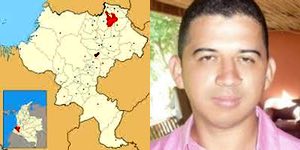
A longtime local leader in the township of Palo, Rodríguez co-founded the Association of Campesino Workers of Caloto in 2003, and was active in several local organizations, including the Marcha Patriótica, a recently created, largely rural political movement that is widely viewed as a building block for the FARC’s transition to a non-violent political party. His body was found by a roadside, next to his motorcycle, with three bullet wounds.
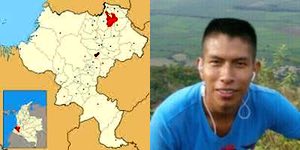
Velasco was a member of several campesino organizations in Caloto, and of the Marcha Patriótica. The Center for Historical Memory describes Velasco as “recognized by the community as a great friend and community member who stood out for having good relations with the whole community. On November 11 he was found in the area known as La Trampa, in Caloto, with a bullet wound in the head.”
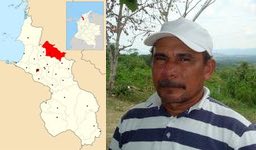
Lara is part of a community of campesino leaders organized to re-claim the La Europa hacienda, from which they were displaced by paramilitaries during the early 2000s. This case is very well known, and Lara has received so many threats that he is protected by the Colombian Interior Ministry’s National Protection Unit. On November 17 in Sincelejo, Sucre, Lara’s bodyguard shot and killed a hitman who had drawn a gun.
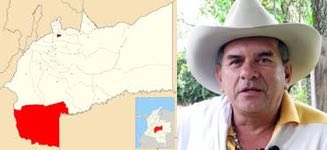
Monroy was a leader of the Losada-Guayabero Environmental Campesino Association (ASCAL-G), very active in local human rights and campesino networks including the Marcha Patriótica, and a vocal opponent of oil exploration and fracking. He was shot in the neighboring municipality of San Vicente del Caguán, Caquetá, about three miles from the base where Colombian Army’s Cazadores Battalion is headquartered. He was 54 and a lifelong resident of this region, a traditional FARC stronghold.
In May, Monroy and other local activists denounced that “soldiers from the Battalion were patrolling together with three people in civilian clothing, taking photographs of leaders,” and that “graffiti with the name ‘AUC’ had appeared on the road” near San Vicente del Caguán, according to Colombia’s Verdad Abierta investigative journalism website. (The AUC, or United Self-Defense Forces of Colombia, was a national network of right-wing paramilitary groups that formally disbanded in 2006.)
San Vicente del Caguán and La Macarena—two of five municipalities that hosted failed peace talks with the FARC between 1998 and 2002—are a flashpoint for violence against social leaders. San Vicente’s mayor, elected in October 2015, comes from the Democratic Center, the rightist political party of former president Álvaro Uribe. Mayor Humberto Sánchez told reporters he does not believe Monroy’s killing was politically motivated, speculating that he “was likely killed by disgruntled neighbors.” Sánchez had also accused Monroy’s campesino organization of being guerrilla collaborators, and said that the spate of AUC graffiti owed to “the guerrillas preparing the ground for assassinations of campesinos and cattlemen and using that to justify their actions.”
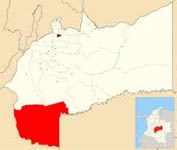
Losada was president of the Community Action Board (Junta de Acción Comunal, a sort of local elected advisory commission) of Platanillo township in La Macarena, and a member of DHOC, the Foundation for the Defense of Human Rights and International Humanitarian Law of East-Central Colombia, a local human rights network, as well as the Marcha Patriótica. He was at home with his family when two masked men burst into his home and shot him nine times.
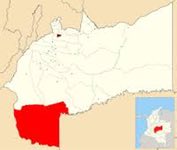
Cuéllar was president of the Community Action Board of La Victoria township in La Macarena, and a member of ASCAL-G, the same organization as Erley Monroy.
He was walking home from Monroy’s wake with his daughters, when two men on a motorcycle shot him. “They followed him all the way home on the motorcycle and then shot him,” Cuéllar’s sister told the Miami Herald. “And then they pointed at the girls, but the gun didn’t go off.”
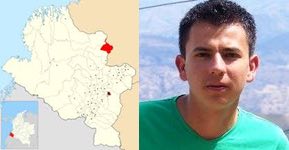
Bolaños, a member of the Association of Campesino Workers of Nariño (Astracan), was on his motorcycle, returning from a meeting of local pro-peace groups, when a hitman riding on the back of another motorcycle fired six shots at him from a handgun. All missed. Verdad Abierta reports that he had not received any threats beforehand, “and the only thing he know of was a pamphlet with the ‘self-defense groups’’ initials that had circulated in Leiva, without mentioning either him or Astracan.”
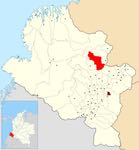
Like many of the victims listed here, Cabrera was a member of the Marcha Patriótica. “As a member of the Marcha Patriótica, he actively supported diverse peace initiatives,” reports the Center for Historical Memory, including the designation of a village in Policarpa as a zone for FARC disarmament.
Cabrera had not been threatened before the 20th, when two masked men intercepted his motorcycle and shot him 12 times.
Rather than push for an investigation, the mayor of Policarpa, Claudia Inés Cabrera (no relation), denied that the murder had any political motivation. The victim “isn’t recognized as a community leader,” she said. After a security meeting between the mayor and local law enforcement, a statement contended that Cabrera’s father said “he was apathetic about politics and had never belonged to a political group.” The victim’s father, Sergio Cabrera, told reporters that no, “he liked politics, but not too much. He was a man of peace.” Lizeth Moreno, a local Marcha Patriótica leader, noted that “in her communiqué, the mayor doesn’t even reject the homicide, she justifies it saying that Rodrigo presumably had a [criminal] past.”
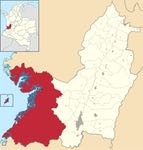
Cortés, a boat mechanic and member of the Marcha Patriótica and at least two local human rights networks, had been organizing protests against forced coca eradication in the rural zone of Buenaventura. A red boat with three black-clad men who were unfamiliar to eyewitnesses brought Cortés from his workshop to his home, where they shot him to death.
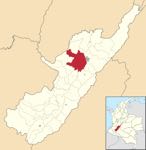
Canacué, a 60-year-old member of her township’s Community Action Board and of the Marcha Patriótica, was shot three times on a road near her home. Though active, she was not considered a prominent social leader. “She was part of the Marcha Patriótica, one of those people who goes to all of the events and meetings,” an acquaintance told the Center for Historical Memory.
At a meeting with Huila’s governor the next day, local leaders denounced an increase in acts of vandalism and the presence of paramilitaries “hidden and poised to pounce” (agazapados). Police never arrived at the crime scene to investigate the killing. Canacué’s body remained on the roadside from 8:30 AM until 1:00 PM, when the funeral home came to recover it.
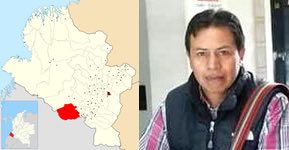
Unidentified people threw an explosive device at the home of Chirán, governor of the Gran Cumbal indigenous reserve. On November 3, Chirán, who works with the local Marcha Patriótica, had received a threatening pamphlet from a group calling itself the “Military Bloc of the Southwest Pacific of Nariño.”
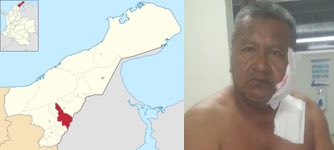
Ramírez, a leader of the Mayabangloma reserve of the Wayúu indigenous community, was shot three times by an individual waiting for him outside his residence. He is recovering from his wounds. Southern Guajira indigenous authorities say they have “detected in several communities unknown subjects on high-powered motorcycles.”
The sharpness of the increase in murders during the post-first-accord period is striking. It looks almost as though a switch got thrown somewhere within Colombia’s darkest, most reactionary quarters. Still, experts warn against attributing all this killing to a coherent nationwide conspiracy against the peace talks.
Carlos Guevara, who runs the Human Rights Observatory at the Colombian group Somos Defensores, told Verdad Abierta that the first accord’s rejection in an October 2 plebiscite did worsen the situation significantly. Because there was no accord in place, the protection measures it foresaw for opposition social movements could not be implemented, even as the FARC began clearing out of zones that it controlled or influenced. With the FARC presence reduced, other groups have moved into these zones and begun to threaten existing organizations.
Guevara cautioned, though, against blaming everything on the right wing:
“We can’t say that it’s only the paramilitaries killing or that the extreme right has an extermination plan (plan pistola), because different things are happening in each region. We have indications that the ELN [a smaller leftist guerrilla group] is entering new zones in Cauca and has committed killings; or that the paramilitaries are extending their control in zones of Antioquia that the FARC have left.”
In a December 2 statement, the UN High Commissioner for Human Rights’ Colombia field office identified several conditions that the zones of most intense attacks have in common:
a. The vacuum left behind by the FARC-EP in rural areas
b. The absence of the state
c. The perception of certain actors that see human rights defenders as obstacles to achieve their economic and political interests
d. Stigmatization against defenders [i.e. accusing them of being tied to guerrillas]
e. The population’s tendency to use force to regulate conflicts
f. Disputes between illegal groups for control of illegal economies in these zones
g. The lack of possibilities for economic subsistence
None of this excludes the possibility that many regions are seeing a deliberate attempt to weaken and intimidate social organizations. “We warn that this type of repeated actions seeks to generate an atmosphere of instability and hostility for the implementation of the peace accords with the FARC,” reads a statement from the Jesuit think-tank CINEP.
Existing social organizations will be essential to the accords’ implementation in rural areas, and for the FARC’s transition to a peaceful political movement. This makes them especially vulnerable to those who wish to silence them, even before the guerrillas’ disarmament has begun.
A widely held view among analysts is that the culprits are often local landowners and political bosses whose power is threatened by provisions in the accords that would encourage small-scale agriculture, open up political participation, and uncover truth about past human rights abuses. These individuals, with one foot in criminality and the other in the legal political system, do not play by democratic rules, and do not hesitate to protect their interests through violence, often employing armed groups—sometimes called “criminal bands”—descended from the pro-government paramilitary militias of the 1990s and early 2000s.
“The recent murders and attempted murders against social leaders in Colombia are not isolated cases,” writes Eduardo Álvarez Vanegas of the Ideas for Peace Foundation.
“The persecuted leaders represent the democratization that armed groups and other sectors—state and private—dread, because their denunciations touch nerves, bring injustices to light, and can affect power arrangements.
…In these cases the network of responsible individuals is much more extensive than we can imagine. Not just the state through corrupt land registries and notaries, but local elites who continue to contract organized crime’s services to threaten or kill whoever gets in their way. That has been the case in Urabá [northwest Colombia] since these groups took power, and that’s how one of the region’s social leaders explained it to me: ‘Otoniel [Dairo Úsuga, the head of the powerful Urabeños neo-paramilitary/drug trafficking group] isn’t after us. We don’t matter to him. It’s the power groups in the region who pay them and their boys to come after us.’ This declaration is consistent with other consultations I’ve made.
Social organizations’ ability to function and participate is the most crucial measure of the peace accords’ credibility. For 50-plus years the FARC has justified its use of violence by arguing that, had it pursued its political goals peacefully, Colombia’s economic, political, and military power structures would have wiped its members out. The ability to practice politics peacefully in historically conflictive areas is now being put to the test.
And so far, it is failing. Most spectacularly in the case of the Marcha Patriótica, which could be a crucial bridge between the FARC’s past as a violent group and its future as a peaceful political organization. The Marcha Patriótica’s members have been hit hard by a violent backlash, and the Colombian government’s response has been poor. “Since last year, when we had 34 Marcha Patriótica militants killed, we asked the President that the cases not be investigated as common crimes, but that they go to the Attorney-General’s (Fiscalía) unit for human rights,” David Flórez, the organization’s human rights coordinator, told the Center for Historical Memory. “Now today there are 126 people murdered, but our request has not been heard, and the investigations aren’t advancing.”
“Months ago, around April or May, when there was an earlier wave of violence, the Interior Ministry created an inter-institutional committee that hasn’t amounted to anything, it hasn’t given a single response or submitted a single report,” the Ideas for Peace Foundation’s Álvarez told Verdad Abierta. “The state must generate immediate responses, it can’t keep throwing on wet rags by creating high-level human rights tables or inter-institutional committees.”
In response to the current murder wave, the national Attorney-General’s Office has sent a group of top investigators—from the citizen security unit, not the human rights unit—to San Vicente del Caguán, and a US$10,000 reward has been offered to anyone who can help identify the perpetrators.
Those are good steps, but Colombia’s state needs to do more, and to do it now, even before the peace accord’s protection measures gradually come on line. Obviously, it’s impossible to assign a policeman or bodyguard to every social or land-rights leader, although this is reasonable to expect for the most threatened individuals. Even more important are actions to increase the probability that killers and their sponsors will be identified and punished. If there is a greater likelihood of going to jail for attacking social leaders, fewer people will attack social leaders. Right now, though, because investigations and prosecutions are slow, underfunded, and often inconclusive, that likelihood is shockingly low.
There should be a broad consensus about the need to lift the climate of fear in Colombia’s countryside. It’s not an issue of pro-peace accord or anti-peace accord, or about left-wing and right-wing politics. It’s about civilization, whether to live by the rule of law, or barbarism, whether to live in a winner-take-all society that settles disagreements through violence. Barbarism had a good year worldwide in 2016. But with the FARC peace accord, Colombia struck a resounding blow against it. Still, as the ongoing wave of killings shows, it is resilient.
A successful post-conflict hinges on Colombia’s ability to guarantee that all who practice politics legally and non-violently need not fear for their lives.